Ecological dynamics
The cool extent of these deep soils tenders to the more timber species and provides for greater diversity in under story as well. In capturing the transitions in the community phases, there is opportunity to debate whether a transition is between community phases or states. In considering the time required for regeneration and growth of the forests in this climate as well as the fire frequency and management responses, transitions between significant stages of forest growth will be considered as states within this ecological site. Fire is a major player in the natural cycle of this community; however, frequency, intensity and type of fire will influence the shifts within communities. Logging and other alternative land uses has had an impact in these transitions, and these shifts will be described briefly in the following state and transition model. For more information concerning the major forest community groupings in this class, refer to the Habitat type guides referenced below.
State 1
Mature Reference Timber Stand
The Reference State is comprised of Douglas-fir as the dominant over story, with a mixed shrub under story. Scattered grasses, grass-likes, and forbs are included. As this state matures, or ages, the density of the Douglas-fir increases, the under story will decrease and will shift in composition. The diversity in the under story is a factor of latitude and longitude as well as the side of the continental divide it resides on.
Characteristics and indicators. The dominant over story cover is Douglas-fir with an intermixed composition of lodge pole pine and englemann spruce. In some isolated areas, especially along the upper extent of this state/habitat type populations of white bark pine can be found, especially within the Absaroka Mountain Range. The under story is comprised of a mix of shrub species and a few grasses and grass-likes - primarily pinegrass and ross's sedge. Shrubs include Rocky mountain maple, huckleberry, ninebark, Spirea, Oregon grape, snowberry, whortleberry and others. Latitude, longitude and reference to the continental divide will influence the specific under story composition.
Resilience management. This state has evolved and is dependent on frequent, low severity fires that leave the mature trees, but help to think the stand, reduce under story fuel loads and encourage rejuvenation of younger tree species. Mechanical means of doing this can be used to replace the natural fire regime, especially in areas that have become mature or prime for a severe burn.
Dominant plant species
-
Douglas-fir (Pseudotsuga menziesii), tree
-
lodgepole pine (Pinus contorta), tree
-
Engelmann spruce (Picea engelmannii), tree
-
whitebark pine (Pinus albicaulis), tree
-
mallow ninebark (Physocarpus malvaceus), shrub
-
white spirea (Spiraea betulifolia), shrub
-
Oregon boxleaf (Paxistima myrsinites), shrub
-
Rocky Mountain maple (Acer glabrum), shrub
-
pinegrass (Calamagrostis rubescens), grass
-
Ross' sedge (Carex rossii), grass
-
Geyer's sedge (Carex geyeri), grass
-
spike fescue (Leucopoa kingii), grass
-
heartleaf arnica (Arnica cordifolia), other herbaceous
-
western meadow-rue (Thalictrum occidentale), other herbaceous
-
twinflower (Linnaea borealis), other herbaceous
-
sweetroot (Osmorhiza), other herbaceous
Dominant resource concerns
-
Plant productivity and health
-
Plant structure and composition
-
Wildfire hazard from biomass accumulation
-
Terrestrial habitat for wildlife and invertebrates
-
Feed and forage imbalance
-
Inadequate livestock water quantity, quality, and distribution
Community 1.1
Douglas-fir Mature Stand

Figure 8. An open canopy Douglas-fir stand on the lower extent of the Cool Upland woodland ecological site.
The Douglas-fir mature growth stand is comprised of almost entirely of Douglas-fir. The under story is limited due to the closed canopy, but in areas where thinning has occurred, there is a mix of shrubs and herbaceous cover. These stands provide little grazing or forage, but are excellent cover and habitat. Fallen timber and litter are fire hazards and restrict movement through the tree stands.
Resilience management. These stands are resistant to change and relatively resilient with low intensity fires to clear under growth and old growth to maintain the stand. But the risk of intense or catastrophic fire in these mature growth stands is high.
Dominant plant species
-
Douglas-fir (Pseudotsuga menziesii), tree
-
mallow ninebark (Physocarpus malvaceus), shrub
-
thinleaf huckleberry (Vaccinium membranaceum), shrub
-
common juniper (Juniperus communis), shrub
-
pinegrass (Calamagrostis rubescens), grass
-
sedge (Carex), grass
-
nodding brome (Bromus anomalus), grass
-
arnica (Arnica), other herbaceous
-
western meadow-rue (Thalictrum occidentale), other herbaceous
-
aster (Aster), other herbaceous
Community 1.2
PSME Dominant/PICO/PIEN
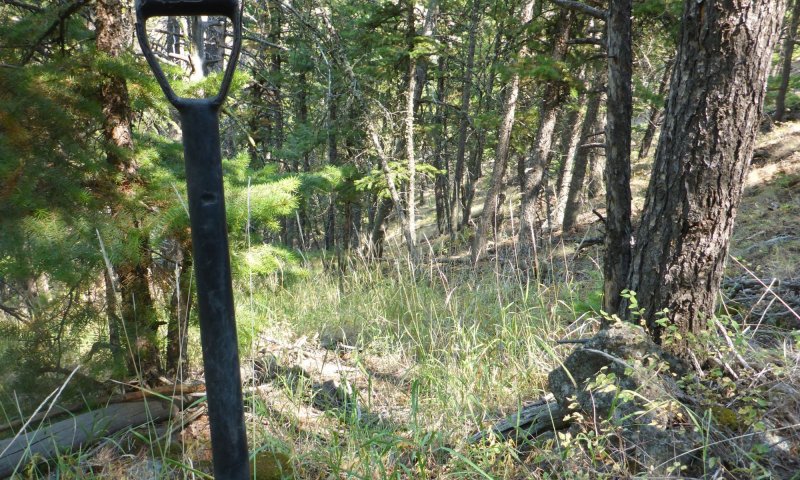
Figure 9. Douglas-fir, white bark pine, and englemann spruce with a healthy under story on a Cool Upland Woodland ecological site.
This Mixed conifer stand is common in frequent low intensity stand replacing fires. Douglas-fir is the dominant species, with a composition of lodge pole pine as well as occurrences of englemann spruce and white bark pine. The under story composition is variable, but is generally high in shrubs and forbs and only scatter grasses, however, canopy openness is the dictating factor for the under story in these communities.
Resilience management. This community is resilient to change unless there is soil disturbance especially when additional disturbances are followed or preceded by fire. Fire is part of the natural rejuvenation of this site, so in the absence of fire, this site will decline in health and become susceptible to disease, insects and other disturbances.
Dominant plant species
-
Douglas-fir (Pseudotsuga menziesii), tree
-
lodgepole pine (Pinus contorta), tree
-
thinleaf huckleberry (Vaccinium membranaceum), shrub
-
common juniper (Juniperus communis), shrub
-
white spirea (Spiraea betulifolia), shrub
-
currant (Ribes), shrub
-
pinegrass (Calamagrostis rubescens), grass
-
sedge (Carex), grass
-
nodding brome (Bromus anomalus), grass
-
Montana wheatgrass (Elymus albicans), grass
-
arnica (Arnica), other herbaceous
-
aster (Aster), other herbaceous
-
western meadow-rue (Thalictrum occidentale), other herbaceous
Pathway 1.1A
Community 1.1 to 1.2
Low intensity stand replacing fires encourage an open canopy and rejuvenates species such as lodge pole pine, and engelmann spruce. The open canopy encourages new under story growth and creates a more mixed stand. Selective harvest and timber management strategies can create this same effect.
| Upland Wildlife Habitat Management |
|
| Forest Stand Improvement |
|
| Forest Land Management |
|
| Prescribed Forestry |
|
| Patch-burning to enhance wildlife habitat |
|
| Forest stand improvement for habitat and soil quality |
|
| Wildlife corridors |
|
| Forest stand improvement pre-treating vegetation and fuels |
|
| Forest Stand Improvement, Prescribed burning |
|
| Forest Stand Improvement to Reduce Wildfire Risk |
|
Pathway 1.2A
Community 1.2 to 1.1
Lack of fire, or timber management, encourages dense stands of Douglas-fir that will crowd out other conifer species and in time will reduce the under story canopy to minimal cover.
State 2
Post Disturbance
Following higher intensity fire or higher frequency of fire, significant logging events, or other major disturbances to the reference community, a shift to State 2 - Post Disturbance, occurs. This state is comprised of community phases that move from a shrub dominant under story with only young sampling cover of lodge pole pine, to a lodge pole pine community. Further management is needed to shift this back to a reference state.
Characteristics and indicators. This State is characterized by the prominence of lodge pole pine and very few if any Douglas-fir. Some englemann spruce will be present, and as this stand matures, more Douglas-fir may establish. Fireweed, buckbrush, snowberry, chokecherry, and serviceberry become more prevalent in this community. A stronger herbaceous community will be present in the first community phase while the over story canopy is more open. But as the tree community matures, this will shift to a more shrubby woody dominated community.
Resilience management. Frequent low intensity fires is needed to maintain both communities within this state, or the use of mechanical means to limit sapling growth and to maintain the under story and canopy in older growth stands.
Dominant plant species
-
lodgepole pine (Pinus contorta), tree
-
Engelmann spruce (Picea engelmannii), tree
-
Douglas-fir (Pseudotsuga menziesii), tree
-
ceanothus (Ceanothus), shrub
-
western snowberry (Symphoricarpos occidentalis), shrub
-
serviceberry (Amelanchier), shrub
-
pinegrass (Calamagrostis rubescens), grass
-
sedge (Carex), grass
-
nodding brome (Bromus anomalus), grass
-
fireweed (Chamerion), other herbaceous
-
arnica (Arnica), other herbaceous
-
aster (Aster), other herbaceous
Community 2.1
Recent Post-Fire
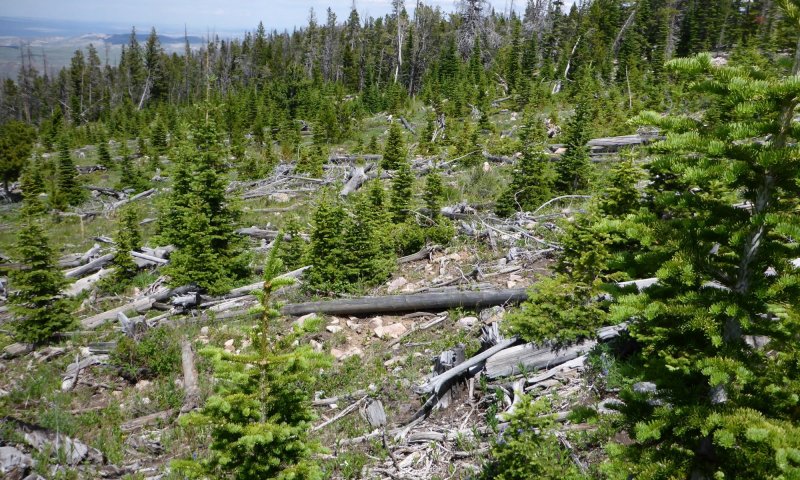
Figure 10. Late stages of the recent post fire community with young saplings.
This community is shrub dominated with saplings of young woody growth, generally lodge pole pine. The major shrubs in this community is buckbrush, snowberry, serviceberry, white spirea, and chokecherry. Areas of raspberry are also common. Fireweed is a major forb that will be prominent on the landscape. Geranium, lupine, chickweed, bedstraw, and a variety of other forbs will fill in the under story with some pinegrass, sedges, and fescues.
Resilience management. This community phase is a transitional phase and so is not resilient unless there is a frequent low intensity fire regime in place. Timber management can maintain this cover. However, if left to natural processes, this community is striving to return to a timbered community.
Dominant plant species
-
lodgepole pine (Pinus contorta), tree
-
currant (Ribes), shrub
-
white spirea (Spiraea betulifolia), shrub
-
ceanothus (Ceanothus), shrub
-
western snowberry (Symphoricarpos occidentalis), shrub
-
pinegrass (Calamagrostis rubescens), grass
-
sedge (Carex), grass
-
spike fescue (Leucopoa kingii), grass
-
fireweed (Chamerion), other herbaceous
-
aster (Aster), other herbaceous
-
bedstraw (Galium), other herbaceous
Community 2.2
PICO/PSME
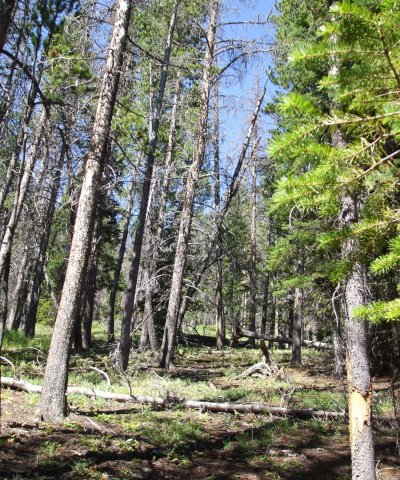
Figure 11. Mature lodge pole pine community with both Douglas-fir and englemann spruce present.
Recovery following intense fires tends towards a lodge pole pine dominated community. Douglas-fir maintain under low intensity, and with time will recover after a more catestrophic fire, lodge pole pines can recover relatively quickly in low frequency of fires. As the lodge pole pine increase in size and density, the under story shifts to a more herbaceous cover with shrubs rather than the shrub dominated.
Resilience management. This community, once matured, is resistant to change, unless fire is involved or logging/timber management practices are in place. The under story is relatively resistant to much impact, but again with fire, this can change rapidly. As the stand continues to mature/ages, Douglas-fir and englemann spruce will increase in the canopy.
Dominant plant species
-
lodgepole pine (Pinus contorta), tree
-
Douglas-fir (Pseudotsuga menziesii), tree
-
Engelmann spruce (Picea engelmannii), tree
-
mallow ninebark (Physocarpus malvaceus), shrub
-
white spirea (Spiraea betulifolia), shrub
-
western snowberry (Symphoricarpos occidentalis), shrub
-
pinegrass (Calamagrostis rubescens), grass
-
sedge (Carex), grass
-
nodding brome (Bromus anomalus), grass
-
spike fescue (Leucopoa kingii), grass
-
arnica (Arnica), other herbaceous
-
western meadow-rue (Thalictrum occidentale), other herbaceous
-
twinflower (Linnaea borealis), other herbaceous
Pathway 2.1A
Community 2.1 to 2.2
Natural succession or regeneration following fire leads to a timber stand of mainly lodge pole pine and a decreased under story. Lack of fire frequency, and with out any timber management or other impact to the tree canopy, this community will transition to a timber stand.
Pathway 2.2A
Community 2.2 to 2.1
Stand replacement fires, low intensity fires remove the timber and open the canopy encouraging the shrubs and under story forage to increase. This natural process can also be expedited initiated with timber harvest practices. Removal of the old growth over story, opening the canopy leads to an increase of the under story dominance.
| Critical Area Planting |
|
| Upland Wildlife Habitat Management |
|
| Forest Stand Improvement |
|
| Prescribed Forestry |
|
| Patch-burning to enhance wildlife habitat |
|
| Forest stand improvement for habitat and soil quality |
|
| Wildlife corridors |
|
| Forest stand improvement pre-treating vegetation and fuels |
|
| Forest Stand Improvement, Prescribed burning |
|
State 3
Degraded
Following an intense fire, or fire followed by a sequence of severe weather, erosion is common. The loss of soil, litter and conditions needed for vegetation recovery greatly reduces the ability for this site to recover, especially woody vegetation. These areas tend to establish as a grass and shrub dominated community and do not transition to a woody canopy without significant inputs (planting of woody vegetation) with surface scarification to allow competition of the woody species with the herbaceous under story.
Characteristics and indicators. This state's main characteristic is the lack of woody vegetation. The indicator that this is a degraded woody site compared to an open parkland site, is that there is generally evidence of the erosion, the disturbance that led to the event - charred debris, clear-cut stumps or logging evidence, blow-down or similar debris that remains in the area. A grass and shrub dominated state is what is found. Shrubs include White spirea, serviceberry, chokecherry, a variety of currants, wild rose, and others. Grasses include pinegrass, Idaho fesuce, king spike fescue, and rough fescue on the west divide. Nodding brome and mountain brome grasses, as well as a variety of rhizomatous wheatgrasses. A wide variety of forbs are expected on this site, but species will vary depending on the what extent of the range is being evaluated (latitude, longitude, west/east divide).
Resilience management. Grazing management is key on these areas. They are usually small in extent and can have impact from snow drift and snow runoff. Fire is still a factor with these sites, but has less of an impact overall. Drought, insect, and wildlife use are factors that affect the resiliency of this community. Overall, this community is stable and resistant to significant changes. Weedy invasions are possible. Thistle, houndstongue, and other weedy species are common invaders.
Dominant plant species
-
currant (Ribes), shrub
-
serviceberry (Amelanchier), shrub
-
Woods' rose (Rosa woodsii), shrub
-
mountain big sagebrush (Artemisia tridentata ssp. vaseyana), shrub
-
pinegrass (Calamagrostis rubescens), grass
-
spike fescue (Leucopoa kingii), grass
-
Montana wheatgrass (Elymus albicans), grass
-
sedge (Carex), grass
-
brome (Bromus), grass
-
aster (Aster), other herbaceous
-
fireweed (Chamerion), other herbaceous
-
field chickweed (Cerastium arvense), other herbaceous
-
geranium (Geranium), other herbaceous
-
lupine (Lupinus), other herbaceous
Dominant resource concerns
-
Sheet and rill erosion
-
Classic gully erosion
-
Aggregate instability
-
Drifted Snow
-
Plant productivity and health
-
Plant structure and composition
-
Terrestrial habitat for wildlife and invertebrates
-
Feed and forage imbalance
-
Inadequate livestock water quantity, quality, and distribution
Community 3.1
Native Grasses/Shrubs
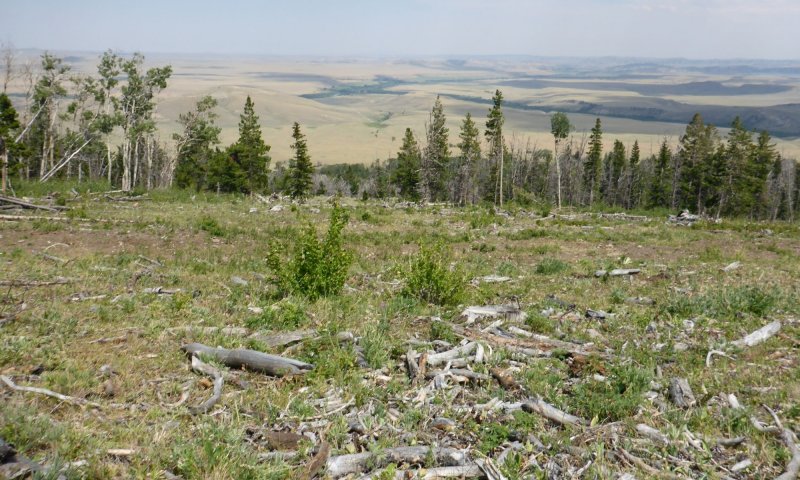
Figure 12. Clear-cut logging with no stand rejuvenation after 15 years of recovery.
This community phase will have remnant signs of fire or logging that removed the woody vegetation, but the site is dominated by herbaceous species. This community can have a broad diversity of species and may vary greatly with use. However, for this ecological site, the main capture is the long-term loss of woody vegetation and the dominance of shrubs and grasses within these small patch dynamics in the forest habitat.
Resilience management. This site is relatively resilient to change with limited management. Grazing impacts can be significant depending on the locality of other grazing forage and the size of the community. Fire has a limited impact on this site, but it does provide a unique forage base within a forested habitat.
Dominant plant species
-
serviceberry (Amelanchier), shrub
-
Woods' rose (Rosa woodsii), shrub
-
currant (Ribes), shrub
-
ceanothus (Ceanothus), shrub
-
western snowberry (Symphoricarpos occidentalis), shrub
-
pinegrass (Calamagrostis rubescens), grass
-
spike fescue (Leucopoa kingii), grass
-
Idaho fescue (Festuca idahoensis), grass
-
Montana wheatgrass (Elymus albicans), grass
-
brome (Bromus), grass
-
sedge (Carex), grass
-
fireweed (Chamerion), other herbaceous
-
groundsel (Tephroseris), other herbaceous
-
aster (Aster), other herbaceous
-
geranium (Geranium), other herbaceous
-
lupine (Lupinus), other herbaceous
-
field chickweed (Cerastium arvense), other herbaceous
Community 3.2
Invaded Community
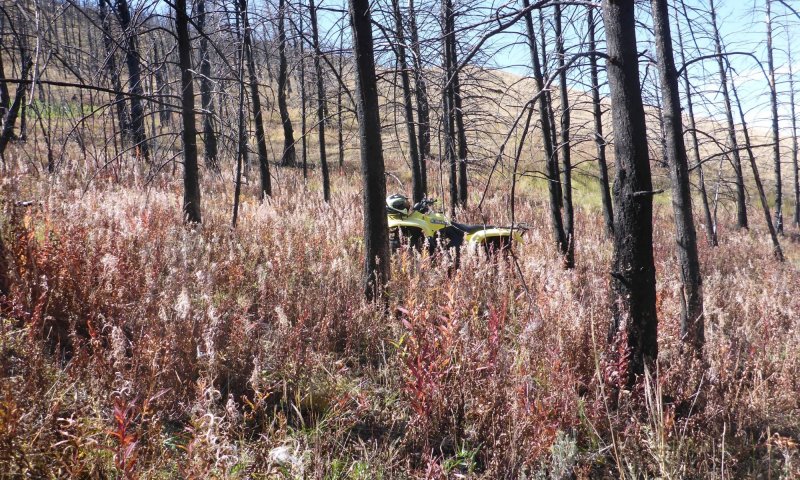
Figure 13. Thistle, fireweed, and aster invaded community three years post fire on this Douglas-fir/lodge pole pine community.
Following major disturbances where seed sources are present, a flush of native and invader species is common, especially following fire fighting operations as well as logging activities. A variety of thistles, houndstongue, smooth brome, and other aggressive introduced species will dominate a site. Mullein, elkweed and other natives can become over abundant on these sites as well, but with time will decrease unlike the introduced invaders.
Resilience management. Once these sites are invaded, without significant inputs to control in the invasive species, these communities will not improve. And without treatment and follow up management will continue to degrade and will spread to other surrounding communities.
Dominant plant species
-
currant (Ribes), shrub
-
Woods' rose (Rosa woodsii), shrub
-
western snowberry (Symphoricarpos occidentalis), shrub
-
smooth brome (Bromus inermis), grass
-
Kentucky bluegrass (Poa pratensis), grass
-
spike fescue (Leucopoa kingii), grass
-
pinegrass (Calamagrostis rubescens), grass
-
fireweed (Chamerion), other herbaceous
-
thistle (Cirsium), other herbaceous
-
aster (Aster), other herbaceous
-
gypsyflower (Cynoglossum officinale), other herbaceous
Pathway 3.1A
Community 3.1 to 3.2
Seed transport by wildlife, especially migratory species, recreation and livestock can introduce a variety of aggressive weedy species that will dominate the site; especially in areas that are impacted by rodent activity, frost heave, heavy use areas by wildlife and livestock, and other surface disturbances.
Context dependence. The composition and shift will vary from location to location. The type of weedy species will determine how limited the site will be after the invasion.
Transition T1A
State 1 to 2
Fire is a natural process in this ecotype, however, if an intense or crown fire occurs, Douglas-fir is impacted and is slower to recover. Lodge pole pine can recover more rapidly in these situations. Following an intense fire, the herbaceous and shrub under story will remain prominent for extended time while the conifers rejuvenate. Once the trees recover, the site will transition to a lodge pole pine site.
Constraints to recovery. Seed source and time for recover of Douglas-fir is one constraint for this site to recover. When lodge pole pine establishes and becomes dominant, it is a matter of time before another disturbance opens the stand and allows Douglas-fir to establish or just the natural aging and thinning of the stand providing opportunity for the species transition.
Context dependence. The intensity of or frequency of fire and the circumstances of the fire, pre-fire community composition, and post-fire weather occurrences can shift the response of these communities.
Transition T1B
State 1 to 3
Fire, generally higher intensity of fire, followed by extreme erosion caused by weather. Following fire, especially high intensity fires, there is little to know water retention or infiltration due to multiple different factors; so, if an intense storm hits with substantial rain fall, hail, wind, or other erosion factors, the litter, ash, and top soil and duff layers are quickly removed exposing raw and many times depleted soils. The loss of soil protection also takes seed sources and nursery plants needed for sites to recover. This leaves a site unable to recover the woody vegetation, and is more conducive to grasses, forbs, and drier shrubs.
Constraints to recovery. The lack of seed sources or nursery crops to encourage woody vegetation, with the inhibitions of a dense herbaceous cover to tree growth restricts the ability for this site to recover. These conditions are also prime for invasive or non-native species encroachment further restricting the recovery of the site.
Restoration pathway R2A
State 2 to 1
Given time and with timber management, the community can be managed to encourage Douglas-fir to establish and gain in dominance. Thinning of the canopy, maintaining under story health and if necessary, planting saplings of desired species will transition this site towards reference. There is a need to restore or allow the frequent low intensity stand replacement fires to occur to continue to encourage Douglas-fir and to minimize other conifer species.
| Upland Wildlife Habitat Management |
|
| Forest Stand Improvement |
|
| Forest Land Management |
|
| Prescribed Forestry |
|
| Patch-burning to enhance wildlife habitat |
|
| Forest stand improvement for habitat and soil quality |
|
| Wildlife corridors |
|
| Forest stand improvement pre-treating vegetation and fuels |
|
| Forest Stand Improvement, Prescribed burning |
|
| Forest Stand Improvement to Reduce Wildfire Risk |
|
| Forest stand improvement pre-treating vegetation and fuels preceding a prescribed fire |
|
Transition T2A
State 2 to 3
After a fire, if an intense storm hits with substantial rain fall, hail, wind, or other erosion factors, the litter, ash, and top soil and duff layers are quickly removed exposing raw and many times depleted soils. The loss of soil protection also takes seed sources and nursery plants needed for sites to recover. This leaves a site unable to recover the woody vegetation, and is more conducive to grasses, forbs, and drier shrubs.
Constraints to recovery. The lack of seed sources or nursery crops to encourage woody vegetation, with the inhibitions of a dense herbaceous cover to tree growth restricts the ability for this site to recover. These conditions are also prime for invasive or non-native species encroachment further restricting the recovery of the site.








